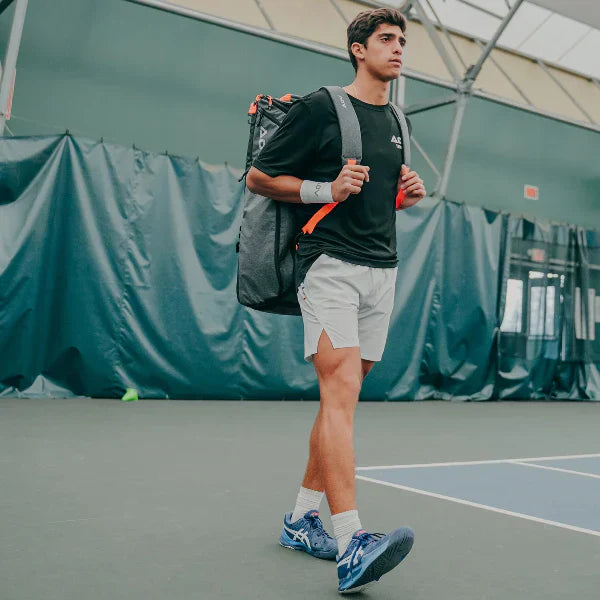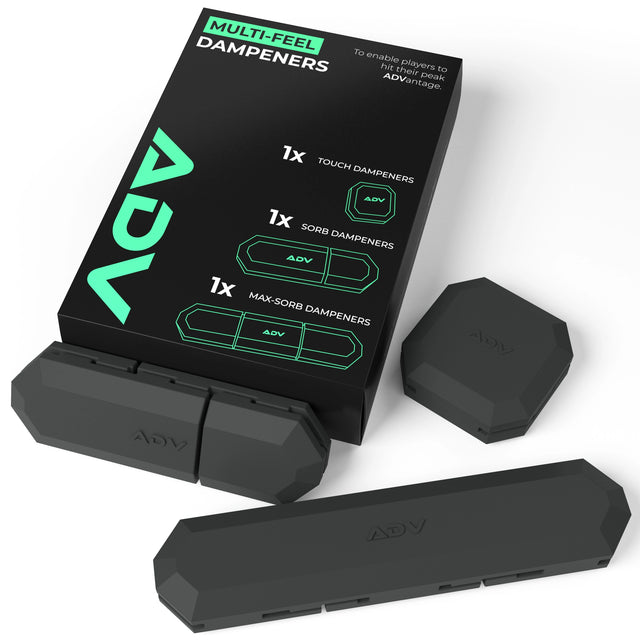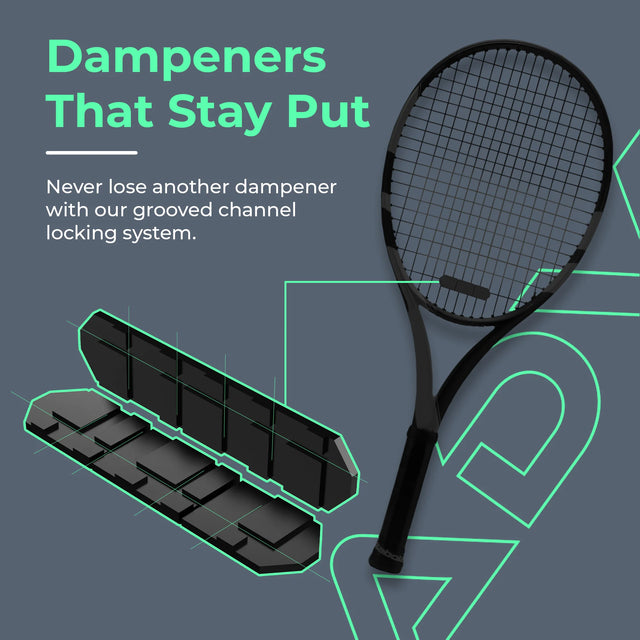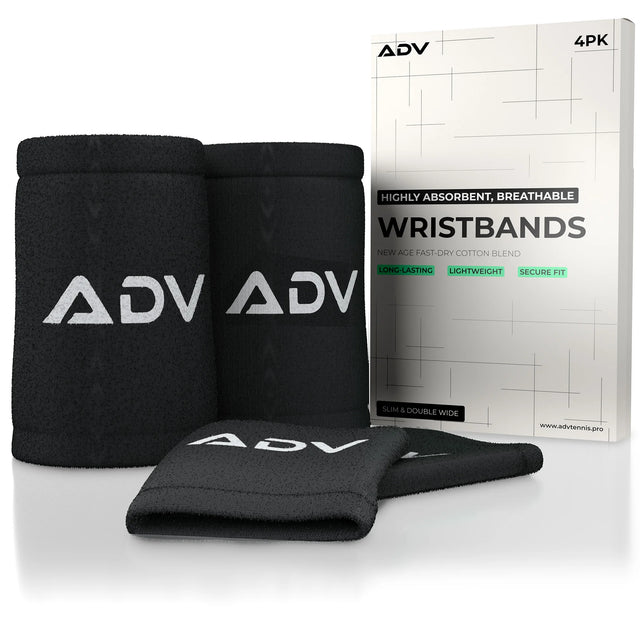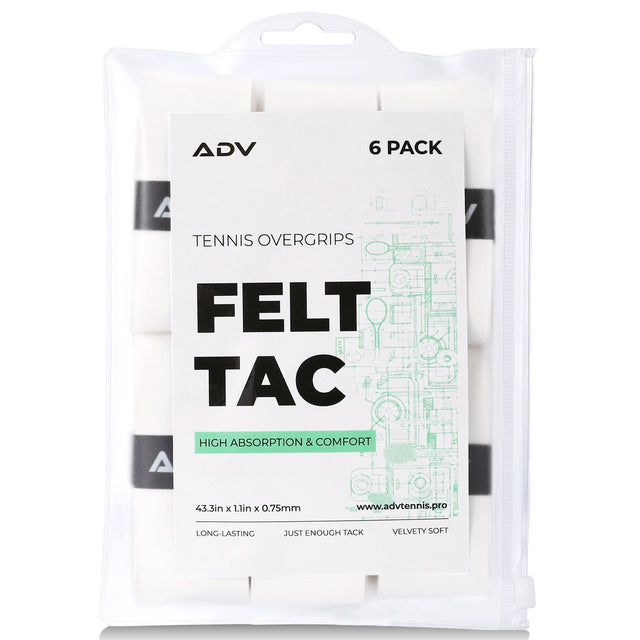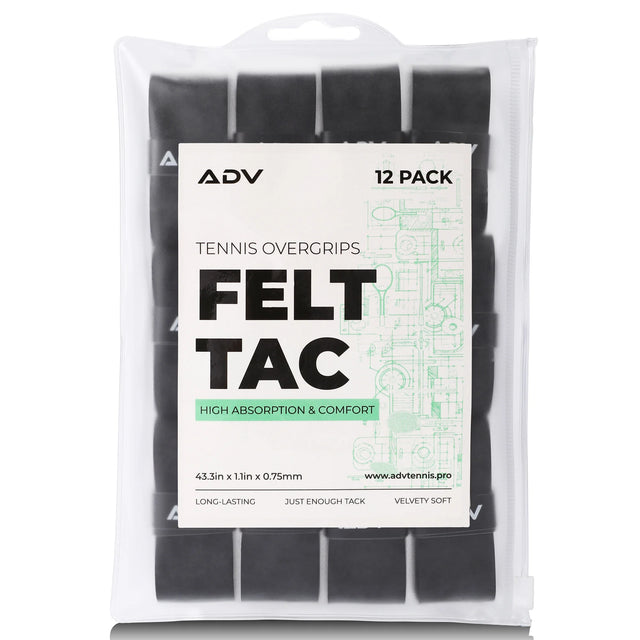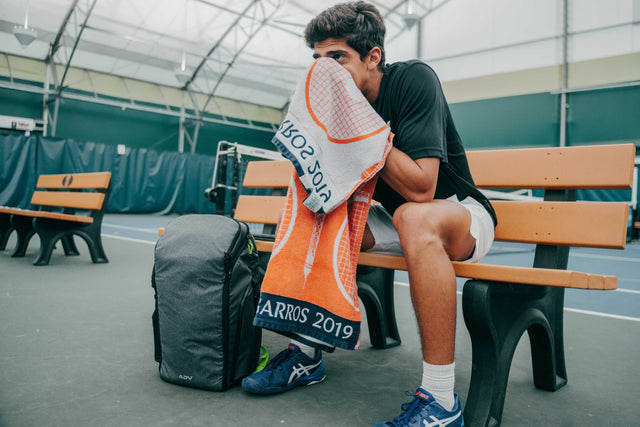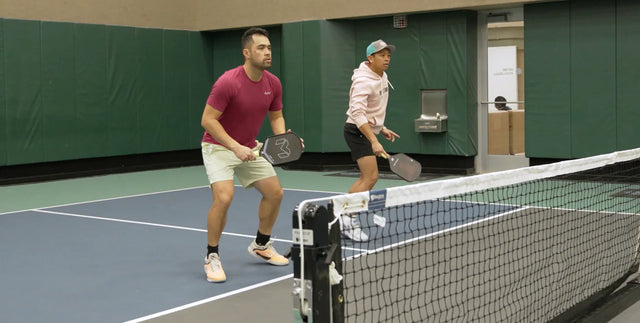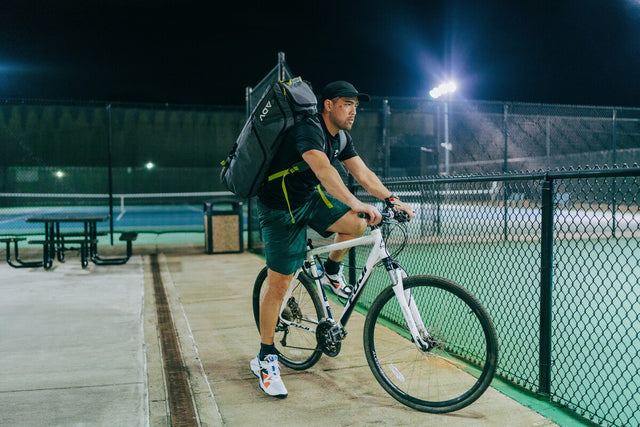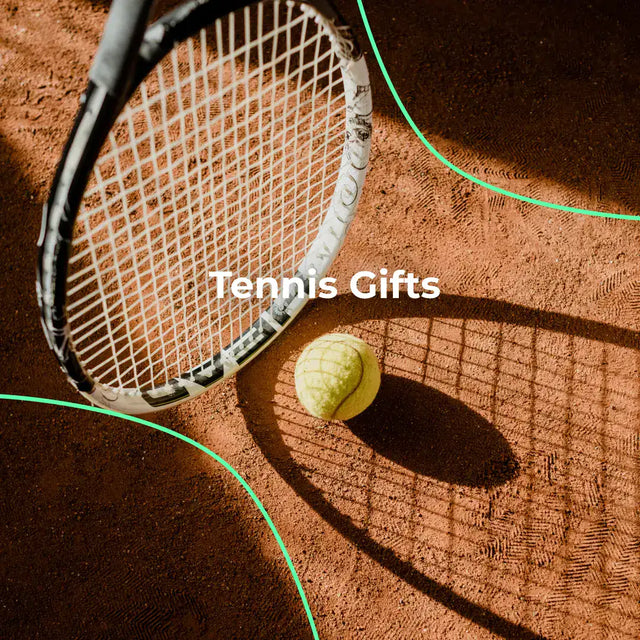5 Game-Changing Features for the Best Tennis Backpacks
When it comes to gearing up for the court, nothing elevates your experience quite like having one of the best tennis backpacks by your side. More than just a sack for your rackets, a modern bag is a high-tech organizer that protects your equipment, keeps your items tidy, and even enhances your comfort. In this guide, we highlight five key tennis backpack features that can make a tennis bag truly game-changing. Whether you’re a weekend player or a daily court warrior, these innovations can transform an ordinary bag into a top tennis gear bag that simplifies your routine and safeguards your gear.
Dedicated Racket Compartment and Protection
The primary purpose of any tennis bag is to carry and protect your rackets, so it’s no surprise that a dedicated racket compartment is the number one feature of a game-changing bag. An ideal tennis backpack with a racket holder will have a special section designed to fit and secure your tennis racquets snugly. This compartment usually has a structured shape or straps to hold racket handles in place, preventing them from jostling around as you move. The advantage is clear: your expensive rackets stay securely stowed and are less likely to get scratched or damaged by other gear in the bag.
But it’s not just about stashing rackets – protection is key. The best tennis racket bags include extra padding or even thermal lining in the racket compartment for added protection. Padding around the racket frames shields them from impact if you accidentally drop the bag or bump it during travel. Some high-end bags feature thermal or insulated lining in the racket section, which helps protect your racket strings from extreme temperatures. This is important because heat can loosen string tension, and cold can make strings brittle. Features like padded compartments are crucial for keeping your rackets safe from impacts and weather-related damage. By preserving the racket’s frame integrity and string tension, a well-padded compartment ensures you’re always ready to play with equipment in top condition.
Capacity also comes into play. Racket compartments can vary in size – a compact tennis backpack might hold two rackets, while larger bags have space for three or more. Consider your needs: if you carry multiple rackets for matches, you’ll want a bag that can accommodate them all without being too cramped. A dedicated compartment keeps your racquets separated from the rest of your gear, which not only protects the rackets but also prevents sharp edges (like racket frames) from poking into your clothes or other items. Racket-specific storage is a game-changer because it treats your tennis racquets as priority cargo. When a backpack cradles your rackets with padding, reinforcement, and even climate protection, you gain peace of mind.
Ventilated Shoe Compartment to Isolate Footwear
If you’ve ever finished a long match or intense practice, you know how quickly tennis shoes can become dirty, grass-stained, or sweaty. That’s why having a tennis bag with shoe compartments is a real game-changer. A dedicated shoe compartment allows you to stash your tennis shoes separately from the rest of your gear. This isolation is crucial for a couple of reasons. Separation keeps dirt and odor at bay. By quarantining your shoes in their own pocket, you prevent clay, mud, or court debris on the shoe soles from getting all over your clean clothes, towel, or racket grip tape. The last thing you want is to pull out your fresh change of shirt only to find it smeared because it was sharing space with your shoes. A shoe compartment usually has a wipeable or water-resistant lining, which is easy to clean and prevents any mud or dust from entering.
Secondly, ventilation is a big bonus. Good tennis bags incorporate mesh panels or grommet holes in the shoe pocket to allow air flow. This helps dry out your sneakers and reduces the buildup of bad smells. No one enjoys opening their bag to a blast of foot odor! Ventilation allows moisture from sweat to escape rather than stagnate inside the bag. A ventilated shoe compartment is especially crucial for competitive players, and it’s commonly placed at the bottom or end of the bag with air holes to let the shoes breathe. Another advantage of a separate shoe garage is simply organization. It gives you a consistent spot for your footwear so you don’t have to dig around in the main section to find them. Many players also use the shoe compartment for dual purposes – for example, stuffing a sweaty shirt or socks in there along with the shoes, to keep all the post-match damp items together. If you’re concerned about space, note that some shoe compartments can fold or compress inward when not in use, giving extra room to the main compartment when you don’t have shoes in the bag.

Insulated Cooler Pocket for Food and Drinks
Nothing is more refreshing during a changeover than a sip of ice-cold water or a bite of a cool snack, especially on a hot day. Traditionally, players might bring a separate cooler or an insulated jug, but the tennis backpack with coolers changes the game. Many of today’s best tennis backpacks include a small insulated pocket built right into the bag. This feature is a total convenience upgrade: it keeps your drinks chilled and your energy-boosting snacks fresh, without needing a separate cooler bag. What does an integrated cooler pocket look like? Typically, it’s a zippered pocket lined with thermal, insulated material that helps maintain temperature. You might find it on the side of a backpack or in a front pocket. It’s sized to hold a couple of water bottles or sports drinks, or perhaps a sandwich, protein bar, and a cold pack. By placing these items in the insulated section, you shield them from the outside heat. This way, your water stays cool deep into a summer match, and that banana or energy bar won’t turn into mush or melt in the heat.
This feature can impact performance. Staying hydrated and properly fueled is critical in tennis, and having cool refreshments courtside helps you maintain energy and focus. A built-in cooler pocket means you don’t have to leave the court or carry an extra cooler; everything is in one bag. One high-quality backpack, for instance, even includes a built-in, insulated cooler on the side specifically to store an ice pack along with drinks or snacks. From a health standpoint, keeping your liquids at a safe temperature can prevent heat-related issues. If you’ve ever left a plastic water bottle out in the sun, you’ll know how unappetizing warm water can be, and in high heat, it might even become unsafe to drink if left for hours. An insulated compartment mitigates that risk by preserving a cooler temperature for longer. On cold days, conversely, insulation can keep your drink from freezing or your energy chews from getting rock-hard.
Ergonomic Straps and Lightweight Comfort
Padded shoulder straps are a must. The straps on a quality tennis backpack should have thick cushioning to soften the pressure on your shoulders. This padding prevents the straps from digging in, especially when the bag is heavy. Additionally, ergonomic tennis backpack straps are contoured to fit the natural shape of your shoulders. Many tennis bags feature adjustable straps with an S-curve or air-mesh padding, which distribute weight evenly and reduce strain on your back and shoulders. The goal is to avoid concentrated pressure points that can cause soreness or even injury over time. Some larger tennis bags (like 9- or 12-racket bags) come with not only backpack straps but also chest or sternum straps and even waist straps, which help distribute weight from your shoulders to your torso and hips. While these are more common on hiking backpacks, a few high-capacity tennis backpacks include them for players who travel frequently with heavy gear. Even without those, a lightweight tennis backpack design can make a difference. If the bag itself is made of lighter yet strong materials, it won’t add unnecessary weight to your gear.
Breathable padding is another aspect of comfort. Look for bags that have a padded back panel with mesh or ventilation channels. This allows airflow between the backpack and your back, so you’re less likely to end up with a big sweat patch on your shirt while carrying it on hot days. It also adds cushioning for your spine. Some bags even feature an ergonomic back shape that contours to the curve of your lower back for enhanced support. The importance of these comfort features can’t be overstated. Carrying heavy sports equipment day after day with a poorly designed bag can lead to back or shoulder pain. This means opting for a bag that has not only padded straps but also a smart design that balances the load. For example, placing the racket compartment against your back helps keep the heaviest items close to your center of gravity, making the pack feel lighter.
Another comfort perk is simply having multiple carrying options. Many tennis backpacks feature not only two shoulder straps but also a grab handle on top, and sometimes a tote handle on the side. This way, you can quickly grab it like a duffel for short distances or sling it on your back for longer treks. The versatility is welcome when navigating through a crowded clubhouse or lifting the bag into your car.

Versatility and Multi-Purpose Design
The best tennis backpacks aren’t just one-trick ponies – they often double as excellent all-purpose bags. Versatility is a game-changing feature, as it allows your tennis bag to serve you in contexts beyond the court. Durable tennis backpacks increasingly come with compartments and styling that make them suitable for work, school, or travel, in addition to tennis. This is where features like a padded laptop sleeve, aesthetic design, and innovative layout really shine. One example is a tennis backpack with laptop sleeves. Not long ago, the idea of putting a laptop in a tennis bag might have seemed odd, but times have changed. Now, many tennis backpacks recognize that players might be heading to the court straight from the office or class. These bags feature a padded sleeve or dedicated compartment that securely holds a laptop or tablet. In fact, some racquet sleeves are designed so well that they can double as a safe place for your computer when you’re not carrying racquets. This means your bag transitions seamlessly from carrying your tennis gear to carrying your work essentials. You could go to a morning meeting with your laptop and then head to the tennis club in the evening with the same bag – just swap the laptop out and slide your racquet in. The waterproof tennis bag remains useful even on days you’re not playing tennis, making it a more valuable investment.
Style and Design: Color Options, Trends, and Personalization
Style is another aspect of versatility. Gone are the days when a tennis bag had to scream “sports gear”. Today, tennis bags come in sleek designs, muted colors, or even elegant patterns that wouldn’t look out of place in a coffee shop or on a commuter train. There are options specifically tailored as a tennis bag for ladies, for instance, that blend fashion with function. Think bags in stylish silhouettes or chic colors that still have all the practical compartments hidden inside. The idea is that you don’t need to carry an extra purse or backpack; your tennis bag can be your everyday bag too. Multi-purpose features include things like external accessory pockets that hold not only tennis items but also daily necessities. A felt-lined pocket for sunglasses or phone, a key clip, and pen holders are small touches that make the bag useful in everyday life.
One of the most noticeable modern trends is the shift toward minimalist, sleek silhouettes. Many brands now offer tennis backpacks in refined, understated shapes and neutral color palettes—think blacks, grays, navy, or soft earth tones—that easily transition from the court to the office, gym, or coffee shop. These minimalist designs often feature subtle branding and clean lines, appealing to those who appreciate a sophisticated, versatile look. On the other end of the spectrum, bold and vibrant styles remain popular, particularly among younger players or those who want to make a statement. Bright colors, graphic prints, and unique patterns enable you to express your individuality and add energy to your tennis ensemble. Some brands even coordinate their backpack colorways with their most popular racket lines, letting players create a cohesive, head-to-toe look. Customization is another growing trend in tennis backpack design. Many manufacturers now offer options for personalizing your bag with embroidered initials, custom patches, or even bespoke color combinations. This not only makes your backpack uniquely yours but also helps prevent mix-ups at busy courts or tournaments. For clubs, teams, or leagues, custom logos and group color schemes are available, turning a practical item into a symbol of unity and pride.
Eco-friendly materials and sustainable design have also made their mark on the tennis world. More brands are introducing backpacks made from recycled plastics, organic cotton, or vegan leather alternatives. These options appeal to environmentally conscious players who want their gear to reflect their values as well as their style. Look for bags featuring recycled linings, water-based dyes, or minimal packaging as part of this green trend. Classic and modern influences often blend in current designs. Some players prefer a timeless look, such as canvas blends or heritage-inspired details, which evoke the sport’s rich history. Others gravitate toward contemporary features for a cutting-edge feel.
Choosing Your Ideal Tennis Backpack
The market offers a wide array of quality tennis backpacks, ranging from economical choices to premium, high-end options. This initial evaluation sets the stage for a well-informed decision that aligns with both your budget and your specific needs, emphasizing that value extends beyond the initial cost.
- Consider the tennis bag price and features: When choosing a tennis backpack, it's crucial to evaluate the price against the features it offers. The market offers a wide range of prices, from budget-friendly options to premium, high-end choices. While opting for the cheapest bag might be tempting, investing a bit more for superior quality often proves to be a wise decision in the long run. Higher-quality bags are typically built with more durable materials and better craftsmanship, ensuring they last longer and can accommodate a wider range of uses beyond just carrying your tennis gear.
- Align with your frequency of play and travel habits: Your playing frequency and travel habits should significantly influence your backpack choice. A dedicated, frequent player who spends considerable time on the court or traveling to tournaments might easily justify the expense of a top-tier bag, which offers enhanced durability, specialized compartments, and superior comfort. Conversely, a casual player who hits the courts occasionally might find a mid-range option perfectly sufficient, as it would cover essential needs without unnecessary bells and whistles. This personal assessment ensures the backpack is appropriate for your lifestyle.
- How to order tennis backpacks online: Once you have a clear idea of your requirements and budget, the process of ordering tennis backpacks online becomes straightforward. Reputable sporting goods retailers and direct brand websites are excellent avenues for online shopping. This method allows you to compare various models side by side easily, scrutinize detailed product descriptions, and, most importantly, read numerous user reviews. These reviews can provide invaluable insights into the bag's real-world performance, comfort, and durability, helping you ensure the bag genuinely meets your expectations before purchase.
- Scrutinize dimensions and capacity: Before finalizing your purchase, it's absolutely essential to check the dimensions and capacity of the backpack meticulously. This is particularly vital if you intend to carry multiple rackets, as not all bags are designed to comfortably or safely accommodate more than one. Furthermore, if you plan to use the backpack for other purposes, such as carrying a laptop, ensure there's a dedicated, padded compartment of the appropriate size. Getting the right size from the outset will prevent disappointment and the hassle of returns, ensuring functional versatility.
- Understand return policies for online purchases: Many online retailers offer hassle-free return policies, which can be a comfort, but it's always best to avoid the need for a return by doing your due diligence upfront. This allows you to purchase with confidence, knowing that if the bag doesn't quite fit your needs or suit your preferences once you see it in person, you have recourse. While returns are an option, thorough research into product specifications and user reviews minimizes the chances of dissatisfaction, allowing for a seamless online shopping experience and a confident purchase.
A well-chosen bag will not only secure your equipment but also enhance your overall playing experience, proving to be a durable and adaptable companion on and off the court.

Care and Maintenance
A quality tennis backpack is an investment, and with the right care, it can serve you well for years, looking sharp, staying functional, and protecting your gear every time you hit the court. Proper maintenance not only extends the lifespan of your bag but also ensures that it remains hygienic and pleasant to use. Start with regular cleaning. After each match or practice, take a moment to empty your bag and shake out any loose dirt, clay, or debris. For surface cleaning, use a soft, damp cloth to wipe down the exterior, paying special attention to high-touch areas, such as handles and straps. If you play on clay or grass courts, these areas tend to accumulate stains and dust.
For deeper cleaning, most tennis backpacks can be spot-cleaned with a mild, pH-neutral soap and water solution. Avoid harsh detergents or bleach, as these can degrade the fabric and cause colors to fade. Gently scrub any stubborn marks with a soft brush, then wipe away soap residue with a clean, damp cloth. Always allow your backpack to air dry completely before storing or using it again, and never use a dryer or place it in direct sunlight for extended periods, as excessive heat can warp or weaken synthetic materials.
Odor control is another key aspect of maintenance. Tennis gear, especially shoes and damp towels, can introduce moisture and sweat into your bag, leading to unpleasant smells or even mildew over time. To combat this, always remove sweaty clothes and shoes as soon as possible after playing. If your backpack includes a ventilated shoe compartment, leave it open to air out after use. You can also place odor-absorbing sachets, such as activated charcoal or baking soda pouches, inside the bag to keep it smelling fresh. Be mindful not to overstuff your backpack. Overloading can strain zippers, seams, and handles, leading to premature wear or breakage. If you notice any loose threads, small tears, or fraying straps, address them promptly with a basic sewing kit or adhesive patch to prevent further damage. Lubricate zippers occasionally with a little paraffin wax to keep them running smoothly. Store your tennis backpack in a cool, dry place when not in use. Avoid leaving it in hot cars or damp basements, as extreme temperatures and humidity can cause fabric degradation and promote mold growth.
Choosing the right tennis backpack means balancing all these factors to match your needs. A well-chosen bag will keep your gear organized, protected from the elements, and comfortable to carry, all while fitting your personal style. When you find the bag that checks all the boxes, you’ll wonder how you ever managed without it. Equip yourself with a great tennis gear backpack, and you’ll be able to focus on your game with confidence, knowing that all your equipment is perfectly in place and ready for action.
Sources
-
Travel + Leisure – “The 7 Best Tennis Bags of 2025, Tested and Reviewed” travelandleisure.com
-
The Tennis Tribe – “The 13 Best Tennis Bags and Backpacks: Reviews & Buyer’s Guide” thetennistribe.com
-
Pelotista – “Finding the Perfect Tennis Bag: Our Top Picks for the Best Tennis Bags in 2024”pelotista.com

